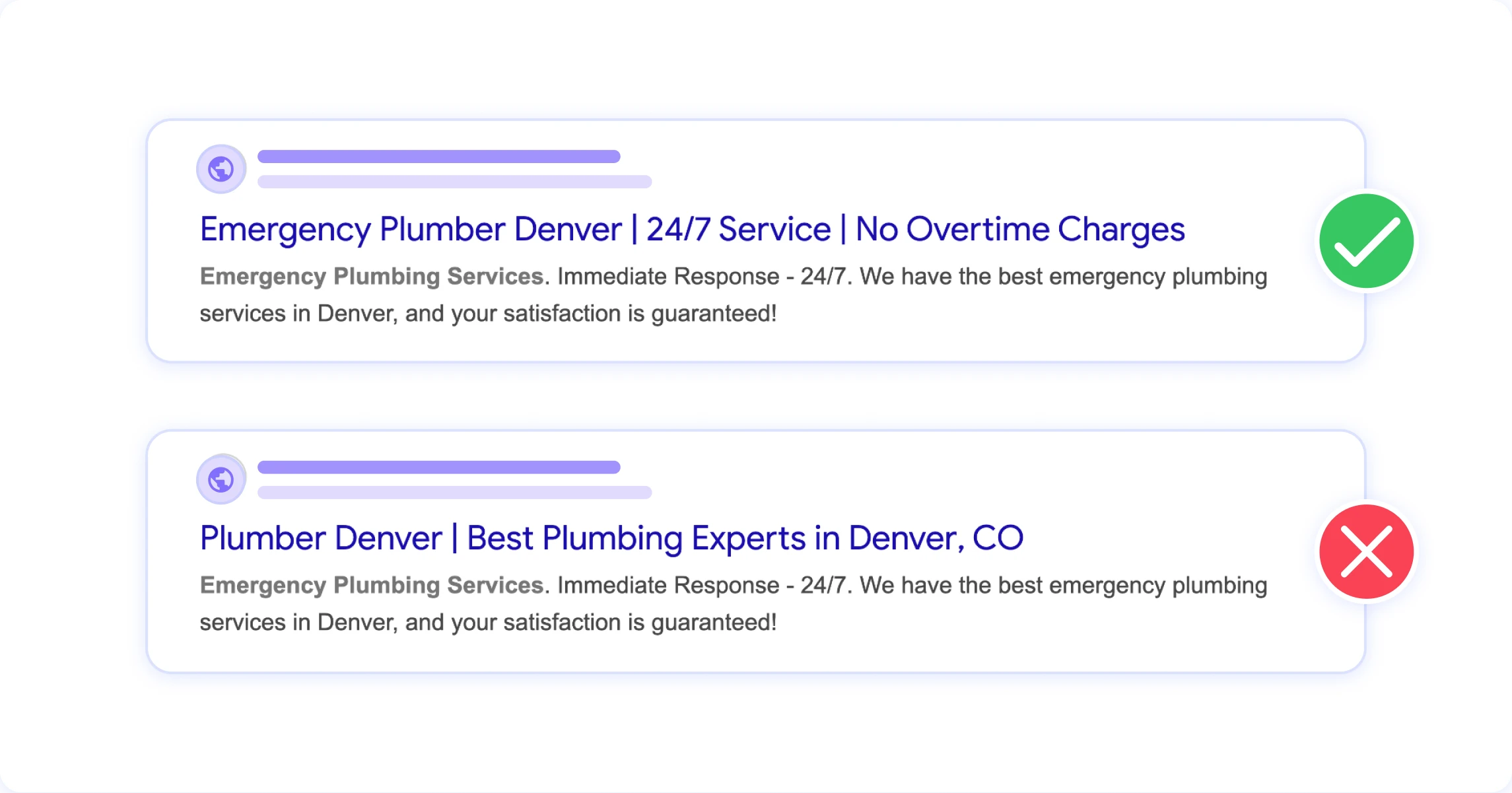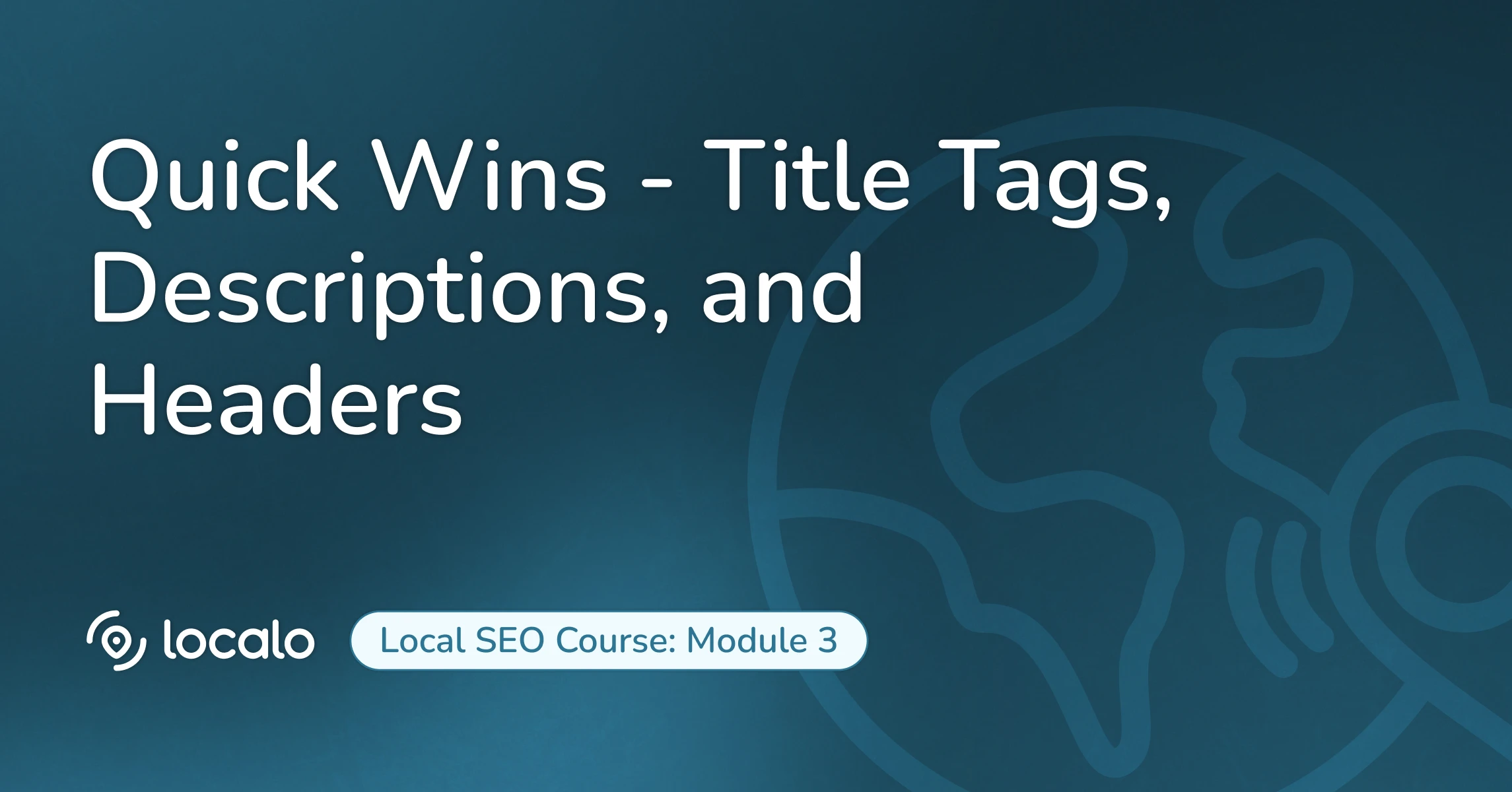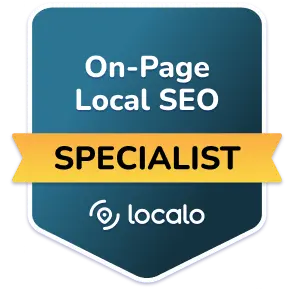Here’s some great news. Google has given us clear guidelines on what they want to see in title tags and meta descriptions. And once you know these simple rules, you’re ahead of most local businesses.
A title tag is what appears as the clickable headline in search results and shows in your browser tab. Keep your titles with your main keyword at the beginning. But here’s what most courses won’t tell you: Google cares more about clarity and relevance than hitting an exact character count.
Your winning formula: Primary Keyword + Location + Unique Benefit = Click magnet.
However, focus on clarity and relevance over exact character counts. Google’s John Mueller confirmed there is value in having title tags longer than the displayable space. According to Google’s Gary Illyes, ‘Try to keep it precise to the page, but I would not think too much about how long it is.’ The key is ensuring your title accurately describes your page content and serves users first.
Google may rewrite titles that are too long, keyword-stuffed, or contain repetitive language, but length alone isn’t a ranking factor.
Examples that work:
-
| “Emergency Plumber Denver |
24/7 Service |
No Overtime Charges” |
-
| “Family Dentist Portland |
Same-Day Appointments |
Kids Welcome” |
-
| “Personal Injury Lawyer Miami |
Free Consultation |
No Fee Unless We Win” |

A meta description is the short text that appears under your title in search results. Think of it as your ad copy. Google calls meta descriptions “like a pitch that convince the user that the page is exactly what they’re looking for.”
Focus on creating compelling descriptions that accurately summarize your page content and include relevant keywords naturally. But don’t just stuff keywords in there - write for humans first. Think about what would make someone choose your business over the others listed on the same search results page. But don’t spend too much time optimizing this element. Why?
Quick reality check: Google doesn’t always show your exact title or description, but they still use your HTML title tag for ranking purposes. Sometimes Google thinks they can create a better title or description for a specific search, and that’s okay - it means they’re trying to give searchers exactly what they’re looking for.
Headers (H1, H2, H3) are like street signs for Google. They help understand exactly what each section of your page covers.
The Simple Header Strategy Google Loves:
- H1: One per page, clear and keyword-focused
- H2s: Break down your main topics
- H3s: Support your H2 sections with details
Google emphasizes the need for precise matching of content to the headers you use, so make sure your headers actually describe what follows.
Imagine a landscaping company that changed their headers from generic “Our Services” to “Professional Landscaping Services in Fort Worth Texas.” This simple change could potentially result in significantly more local traffic because Google can better understand what the page offers.
Google has become increasingly sophisticated in understanding web content, so focus on serving your customers first, and the rankings will follow.
Hey there! Welcome back to our Complete Local SEO Course!
Your pages are working together beautifully now - you’re building something really amazing! Time for some quick wins that deliver immediate results. Today we’re diving into title tags, meta descriptions, and headers. Here’s some great news - Google has given us clear guidelines on what they want to see in title tags and meta descriptions. And once you know these simple rules, you’re ahead of most local businesses.
No guessing games here - just proven strategies that work. Think of these elements as the signs and labels in your digital store that help both customers and Google understand exactly what each page offers.
What makes title tags work like customer magnets?
A title tag is what appears as the clickable headline in search results and shows in your browser tab. Think of it as your digital billboard - it’s often the first thing people see when they find your business online, so it better be compelling.
Keep your titles with your main keyword at the beginning, because that’s what people are looking for. But here’s what most courses won’t tell you - Google cares more about clarity and relevance than hitting an exact character count. They want titles that actually help people understand what your page is about.
Your winning formula? Primary Keyword plus Location plus Unique Benefit equals Click magnet. This formula works because it immediately tells people what you do, where you do it, and why they should care.
However, focus on clarity and relevance over exact character counts. Google’s John Mueller confirmed there is value in having title tags longer than the displayable space. According to Google’s Gary Illyes, ‘Try to keep it precise to the page, but I would not think too much about how long it is.’ The key is ensuring your title accurately describes your page content and serves users first.
Google may rewrite titles that are too long, keyword-stuffed, or contain repetitive language, but length alone isn’t a ranking factor. They’re looking for titles that genuinely help users understand what they’ll find on your page.
Examples that work? “Emergency Plumber Denver 24/7 Service No Overtime Charges.” This tells you exactly what service they offer, where they serve, and what makes them different. “Family Dentist Portland Same-Day Appointments Kids Welcome.” Again, service, location, and unique benefit. “Personal Injury Lawyer Miami - Free Consultation - No Fee Unless We Win.” Service, location, and a compelling benefit that removes risk.
How do meta descriptions work?
A meta description is the short text that appears under your title in search results. Think of it as your ad copy - another chance to convince someone to click on your listing instead of your competitors’.
Google calls meta descriptions “like a pitch that convince the user that the page is exactly what they’re looking for.” That’s straight from Google - they want you to sell the click!
Focus on creating compelling descriptions that accurately summarize your page content and include relevant keywords naturally. But don’t just stuff keywords in there - write for humans first. Think about what would make someone choose your business over the others listed on the same search results page. But don’t spend too much time optimizing this element. Why?
Remember that Google doesn’t always display your exact meta description, but well-written descriptions that Google keep can increase the number of visitors to your pages, which is also important to Google for who-to-rank-first decisions.
Quick reality check: Google doesn’t always show your exact title or description but they still use your HTML title tag for ranking purposes. Sometimes Google thinks they can create a better title or description for a specific search, and that’s okay - it means they’re trying to give searchers exactly what they’re looking for.
How do headers work as Google’s content GPS system?
Headers - H1, H2, H3 - are like street signs for Google. They help Google understand exactly what each section of your page covers, and they help your visitors navigate your content easily.
Think of headers as the outline of your page. Just like a good book has chapter titles that tell you what each section is about, your webpage should have headers that clearly explain what each section covers.
The simple header strategy Google loves? H1 - one per page, clear and keyword-focused. This is like the title of your chapter. H2s - break down your main topics. These are like your section headers. H3s - support your H2 sections with details. These are like your subsection headers.
Google emphasizes the need for precise matching of content to the headers you use, so make sure your headers actually describe what follows. Don’t just put keywords in headers if they don’t accurately describe the content underneath.
Let me give you a real example of how powerful this can be. Imagine a landscaping company that changed their headers from generic “Our Services” to “Professional Landscaping Services in Fort Worth Texas.” This simple change could potentially result in significantly more local traffic because Google can better understand what the page offers and match it to relevant searches.
The generic “Our Services” could be about anything - web design, accounting, plumbing, whatever. But “Professional Landscaping Services in Fort Worth Texas” is crystal clear about what the page covers.
Google has become increasingly sophisticated in understanding web content, so focus on serving your customers first, and the rankings will follow. Write headers that help your visitors understand your content, and Google will understand it too.
How do these elements work together for maximum impact?
Here’s the magic - when your title tag, meta description, and headers all work together, they create a consistent, clear message about what your page offers. It’s like having a well-designed store where the signs outside match the departments inside, and everything makes sense to customers.
Your title tag gets people’s attention in search results, your meta description convinces them to click, and your headers guide them through your content once they arrive. When these all align and use consistent language that matches what your customers are searching for, you create a smooth experience that both Google and your visitors love.
Think about it from a customer’s perspective - they search for “emergency dentist Boulder,” they see your title “Emergency Dental Care Boulder - Same Day Appointments - Open Weekends,” they read your description that mentions same-day emergency appointments, they click through and see headers like “Emergency Dental Services” and “Same Day Appointments Available.” Everything matches their search and their expectations.
Perfect! Your titles, descriptions, and headers are now working together like a well-oiled machine. In our next video, we’re exploring internal linking - your website’s navigation system that guides visitors exactly where they need to go and helps Google understand how your pages relate to each other. Thanks for joining me today, and I’ll see you in the next video!
The websites and Google Business Profiles used throughout the course are for educational purposes only. We're not affiliated with these businesses and don't claim any endorsement from them. All trademarks belong to their owners. Some examples include visual changes (made with browser tools) to help illustrate the SEO concepts we're teaching. These edits are strictly local and illustrative of specific SEO concepts. They don't affect the original websites.




